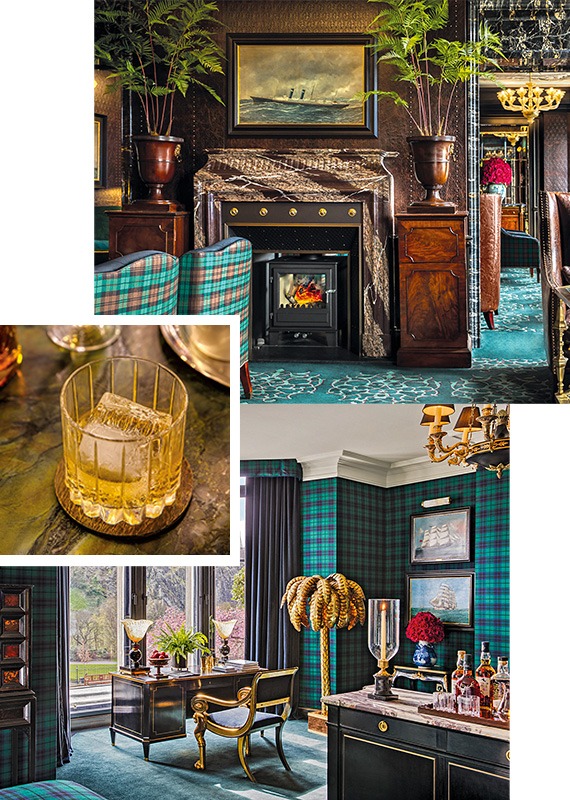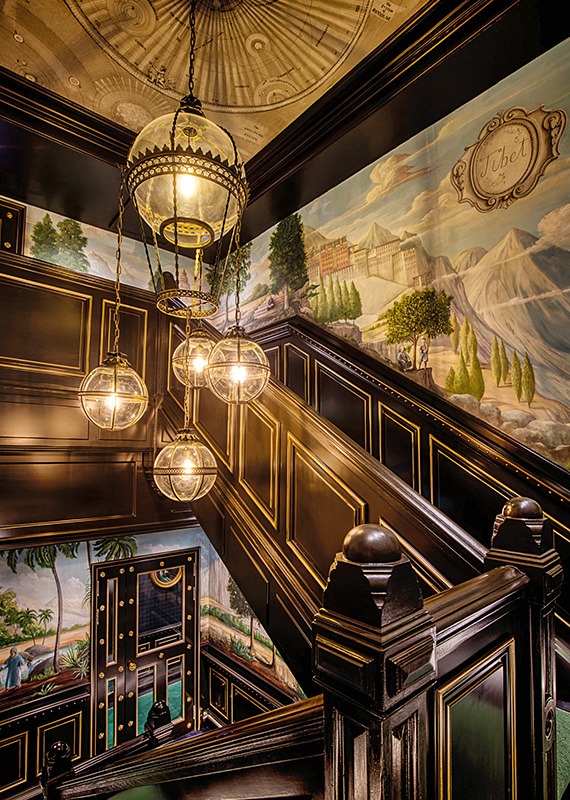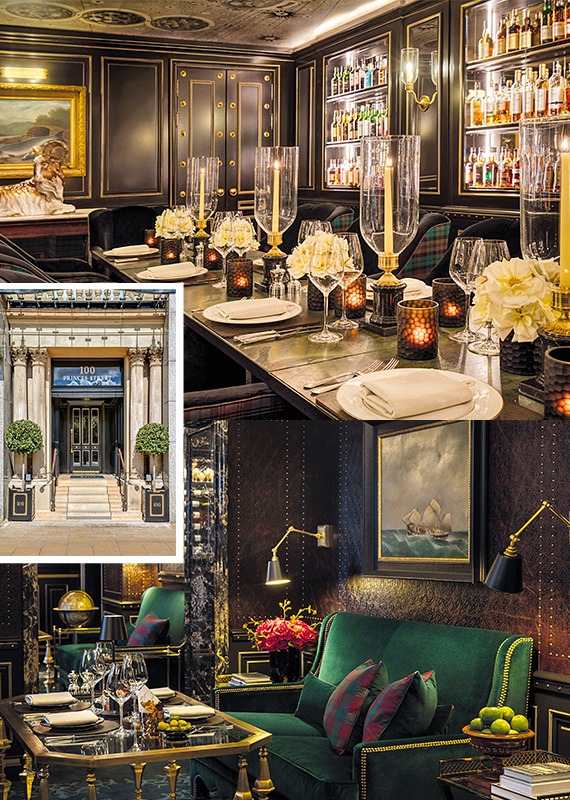You don’t so much arrive in Edinburgh as slip into its story. Especially by train. After four unhurried hours from London King’s Cross – enough time to read a few chapters, drift off to sleep, and munch through some snacks – Waverley Station brings you not to the outskirts, but right into the heart of the city.
In the nearby distance, the castle is waiting, perched high on its volcanic throne, casting a long, knowing gaze over the rooftops. Around it, the Old Town winds and twists, dark closes and steep staircases holding centuries of history tight. Even in the grip of a heatwave, Edinburgh stays cool, wrapped in stone walls and mystery.
The interiors tell a quiet story of modern Scottish craftsmanship
 The hotel has been meticulously designed with local artisans commissioned to create custom-made furnishings, fabrics and artworks that are totally unique to 100 Princes Street
The hotel has been meticulously designed with local artisans commissioned to create custom-made furnishings, fabrics and artworks that are totally unique to 100 Princes Street
Just beyond the sprawl of the Old Town, past the Gothic silhouettes, lies the New Town – Edinburgh’s 18th century answer to urban order. Symmetrical, colonnaded, and Neoclassical, this was the city’s Enlightenment-era facelift. Among its elegant streets, tucked discreetly above Princes Street Gardens, sits 100 Princes Street, a handsome townhouse hotel so unassuming that you might conceivably blink and miss it. There’s no grand signage, just a black door trimmed in gold. You’re in, but only if you’re in the know.
Stepping inside, I receive a warm Scottish welcome – all tartan-clad staff and low lighting. The tone feels more private club than hotel, which is perhaps unsurprising, since it was once home to the Royal Overseas League – a gathering place for globe-trotting Scots. The building has been reimagined with care and intention, with past and present folded gently into the fabric of the hotel. The interiors tell a quiet story of modern Scottish craftsmanship. Araminta Campbell’s custom-woven textiles wrap the walls in mossy greens and Highland reds. Art is curated not hung, furniture is found not just bought, and the detailed ceilings in the bar subtly mimic a ship’s hull, a nautical nod to the building’s expeditionary links. Even the air is thoughtful, wreathed in a bespoke scent, created in-house for the portfolio of Red Carnation Hotels.
With just 30 rooms, privacy reigns. Mine comes with a private balcony just big enough for two extremely comfortable loungers, which, in the late afternoon sun, prove entirely persuasive. Inside, the palette is deep and warm: velvet cushions, rich woods, soft tartans. A minibar offers elevated Scottish staples, the charging points are located where you’d expect them to be and lighting is designed so you don’t have to fight with it. There are two robes, too – one light and gauzy, one thick and spa-soft, which tells you all you need to know about how seriously comfort is taken here.
A stand-out feature is the mural that climbs the stairwell. Created and hand-painted by London-based artists Croxford and Saunders, it maps the paths of Scottish explorers across deserts, oceans and icy realms. Tiny moments hide in the detail – postage stamps, exotic flora, a penguin eyeing the sky (maybe a wink to the urban legend about Edinburgh Zoo’s penguins tracking planes as they fly overhead). It’s playful, almost conspiratorial – the kind of artwork you end up thinking about days later.
 The hand-painted mural by Croxford and Saunders
The hand-painted mural by Croxford and Saunders
In Ghillie’s Pantry, the heart of the hotel, whisky takes centre stage – over 200 bottles are shelved like old books in a library. My whisky guide is Dario, head bartender for 100 Princes Street. I’m not usually the whisky type, but Dario might just change that. From the soft and easy Lowland Auchentoshan to the smoky depths of Bowmore 15 from Islay, my visit proves an adventure through barrels and time. I arrive a novice and I leave more than quarter-converted, with my favourite dram being Glenmorangie Signet, which is rich and surprisingly smooth, pairing very well with gooey, salty chocolate.
Dinner, served in the same room, is a private and cosy affair. There is no printed menu, instead, the chef delivers what is fresh and available – a ‘taste of Scotland’ menu that leans on seasonality and heritage. Salmon, smoked over applewood from the chef’s own garden, comes paired with a whisper of fennel salt. The haggis – often misunderstood by non Scots – is re-imagined as balanced and surprisingly elegant. A fillet of dry and wet-aged beef comes alongside a miniature pie made from the trimmings. Dessert is a Cranachan millefeuille: layers of cream, toasted oats and raspberries tucked between sheets of impossibly crisp pastry.
 Top: Ghillies Pantry; Bottom: The Wallace
Top: Ghillies Pantry; Bottom: The Wallace
Breakfast, served in the Wallace Bar, is as relaxed as everything else. There’s no formal booking, you simply arrive. Tables overlook the gardens, the castle sitting stoic in the distance. Fresh fruit, local eggs, perfectly poured coffee: a reminder that sometimes the best luxury is simply being left alone in a beautiful place with a delicious breakfast. Later that morning, I join a walking tour arranged through the hotel – one of those thoughtful extras. My guide, Gwen – part historian, part urban folklorist – leads me through hidden closes, gates and low tunnels, pointing out quirks I’d have walked straight past. It is a spellbinding couple of hours and I wish I could spend much longer listening to all of Gwen’s stories about Edinburgh’s historic tapestry, but like all good things, my time in the Scottish capital has come to an end, the spell breaking just a little as I head towards the station.
At 100 Princes Street, you’ll find a richly imagined hotel that speaks to travellers who value place. Design here has depth. Service is sharp but never stiff. It’s one for whisky lovers, design doyens, and Edinburgh returnees who think they’ve seen it all. And if you’re lucky enough to stay in the beautiful Archibald Suite (named after legendary Scottish explorer Archibald Menzies), do pause and raise a glass to him on your way out.

